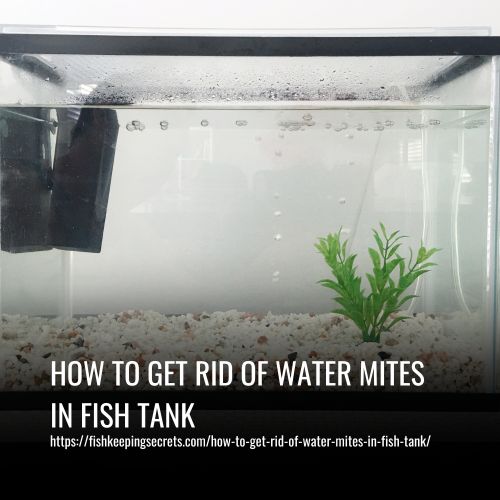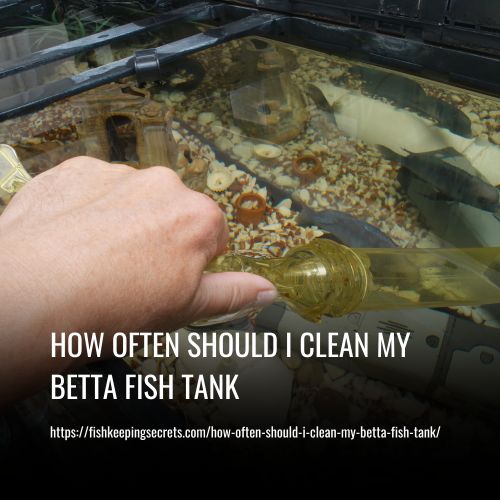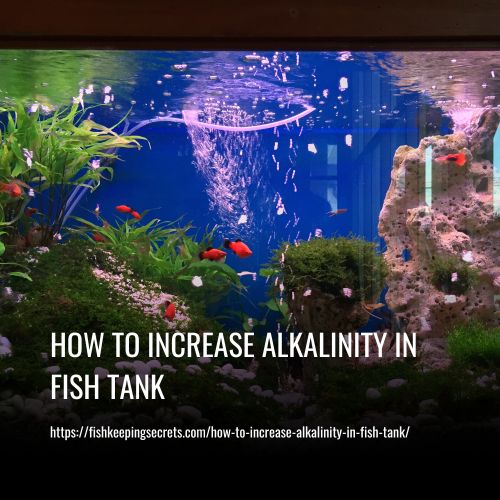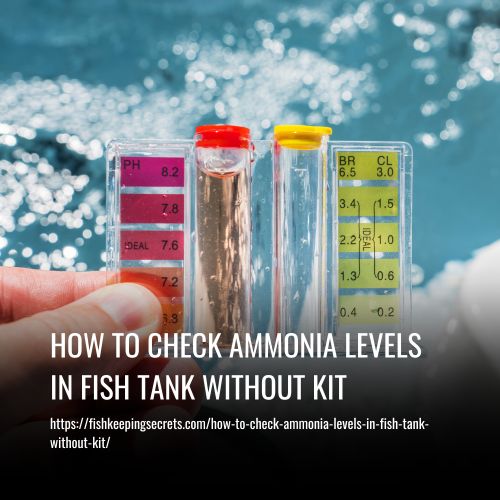Water mites are tiny pests that can be extremely difficult to get rid of if they are left unchecked. Not to fear! With a bit of dedication, knowledge, and the right tools, those pesky little bugs won’t stand a chance.
To Get Rid Of Water Mites In Fish Tank, follow these steps:
- Do Nothing.
- Manually Removing Mites.
- Modify the Tank.
- Deep Clean and Maintain Your Aquarium.
- Vacuum Aquarium Gravel To Remove Fish Food Remains.
- Check the Water Parameters.
- Installing a Powerful Filter.
- Adding Mite-Eating Aquatic Life.
- Use a chemical treatment like Aquari-sol.
- Perform a 10% or 20% water change each week.
- Treating With Aquari-Sol.

Getting Rid of the Water Mites
If water mites become a nuisance to your fish, it is important to take steps for eliminating them. These five tips can help you get rid of these tiny critters from your tank:
1. Do Nothing:
You may not need to do anything if the water mites are not bothering your fish. However, it is important to keep an eye on the population of mites in the tank to ensure they don’t grow out of control and potentially cause infections.
Adult mites typically remain in the substrate and will only bother your fish if they do not have enough food. If this is the case, you may want to consider adding more food or changing their environment to give them a more plentiful source of sustenance.
2. Manually Removing Mites:
Manual extraction is an effective way to get rid of mites in an aquarium. You can use a siphon or a turkey baster to suck the mites up or use a toothbrush or paintbrush to scrub the glass sides of your tank and then suck them up with a siphon.
It may require some effort, but it is far better than dealing with a larger infestation down the line. Remember to take time to inspect every nook and cranny of your aquarium for mites so that you can treat them as early as possible.
3. Modify the Tank:
Water mites can be a nuisance in an aquarium and can cause stress to fish, leading to illness or even death. To help eliminate these pests from your tank, it is important to use the right filter. Canister filters are great for this purpose as they offer powerful filtration that can trap and remove small particles such as water mites.
In addition to filtering out the bugs, it’s also a good idea to keep an eye out for other signs of infestation such as eggs or webs in the tank. Regularly cleaning and maintaining your tank will help decrease water mite populations.
4. Deep Clean and Maintain Your Aquarium:
The frequency of cleaning your fish tank can vary depending on the number of fish you keep and other factors. Generally, it is recommended to clean your tank once a week or once a month if you have fewer fish.
In cases where there are water mites present in the aquarium, it is best to deep clean the tank biweekly. Deep-clean servicing involves vacuuming the substrate, wiping glass surfaces, inspecting of the filter, and assessing water quality.
It is important to perform necessary pruning to plants, as well as changing out dirty water when needed. Overall, proper maintenance and regular cleaning are essential for a healthy home for your fish.
5. Vacuum Aquarium Gravel To Remove Fish Food Remains:
It is important to avoid overfeeding your fish. Eating too much can cause uneaten food particles to linger in the tank, leading to an infestation of aquarium mites. To prevent this, remove any remaining food after feeding and consider using a gravel vacuum cleaner or siphon to regularly clean up the substrate in your tank.
You should also monitor the amount of food you are giving your fish, as too much can cause the water quality in your aquarium to deteriorate and lead to other issues. Taking these steps will help ensure that your fish remain healthy and safe from aquarium mites!
6. Check the Water Parameters:
Maintaining a healthy aquarium is key to preventing an outbreak of water mites. It is important to monitor water parameters, including pH, temperature, ammonia, and nitrate levels on a regular basis. Frequent water changes can help keep parameters stable and reduce the chance of overpopulation.
Additionally, making sure to use only clean and safe materials in your tank will help maintain the water quality and prevent contamination from chemicals or parasites.
7. Installing a Powerful Filter:
HOB filters are a great tool for eliminating aquarium mites, as they suck up tank water through a siphon tube and pump and pass it through different media layers to trap the floating mites. Additionally, HOB filters often generate strong currents which can help dislodge mites sticking to plants and decorations.
However, these filters may not be able to clear all the aquarium mites entirely as some of them may hide in crevices that are out of reach.
8. Adding Mite-Eating Aquatic Life:
Adding mite-eating aquatic life to a fish tank can help remove small brown bugs. Some species that you can add to your tank to help keep pests away include Plecostomus, Siamese Algae Eaters, Chinese Algae Eaters, and Malabar Gudgeons.
Mandarin fish
Pterosynchiropus splendid, or the Mandarin Dragonet, is a stunning addition to any reef tank. Not only are they visually stunning, but they also help to keep pests like mites in check. However, caring for them is not for beginners – as picky eaters, they require dedicated care and a proper diet to ensure their longevity in captivity. It’s important to have an understanding of their specific dietary and care needs before introducing them into your tank.
Angelfish
Angelfish belong to the Cichlidae family and are commonly kept in freshwater aquariums. Known for their beauty and graceful swimming pattern, these fish can be found in the South American tropics. As omnivores, they will eat both flakes and live food such as brine shrimp.
Further, angelfish are renowned for foraging around the tank’s substrate in search of crustaceans and worms to eat. This behavior makes them great killing machines when it comes to dealing with mites in the tank. Therefore, angelfish are an ideal choice for aquarium owners wanting to keep mites out of the aquatic environment.
Firefish
Nemateleotris Magnifica, more commonly known as Firefish, are a beautiful and peaceful species of fish found in the Indian and Pacific oceans. They have vibrant colors, elongated bodies, and long dorsal fins. Firefish are omnivores and enjoy eating zooplankton, shrimp, and small crustaceans, making them great mite feeders for saltwater tanks.
Additionally, they require minimal care and do well in community tanks, making them a great choice for beginner aquarium enthusiasts.
Guppy fish
Guppies, or Poecilia reticulata, are a popular choice for beginner aquarists due to their hardiness and ease of care. These fish are known for being top level swimmers but can also be helpful in controlling mites and other small crustaceans that may be present in the tank. Guppies are peaceful and generally keep to themselves, making them an excellent addition to any aquarium.
Additionally, these fish are easy to breed and provide plenty of stimulation for your tank inhabitants.
9. Use a chemical treatment like Aquari-sol:
Aquari-sol is a chemical that can be used to target and kill aquarium mites, as well as fish diseases like Ich. It should not cause any stress on your fish and is a safe method of eliminating these pests from your tank.
The recommended dosage for Aquari-sol is 12 drops per 10 gallons of water. This concentrated solution will eliminate the mites without harming your fish, as well as reduce algae growth which could attract more aquarium mites.
Additionally, frequent water changes can help to control the population of aquarium mites and reduce their overall numbers in the tank. Therefore, if you notice an abundance of aquarium mites in your tank, Aquari-sol might be worth considering when looking for an effective treatment.
10. Perform a 10% or 20% water change each week:
Mites can be a problem for any fish tank, small or large. Luckily, there are some steps you can take to reduce the population of mites in your aquarium. Regularly performing water changes is an effective way to lower the mite population in your tank.
For small tanks with water below 50 gallons, you should change 10% of the water each week. If your tank is larger than 50 gallons, then it’s best to perform a 20% water change each week to help keep the mite infestation under control.
11. Treating With Aquari-Sol:
The use of Aquari-sol as a treatment for mites is not an officially recommended practice, and there is limited information about the ingredients of the medication. However, it appears that Aquari-sol likely contains copper, which is a common ingredient in medications used to treat Ich. Copper is known to disrupt the respiratory processes of invertebrates like shrimp or snails, which could explain why Aquari-sol might be effective against aquarium mites.
However, any treatments containing copper should not be used in tanks with shellfish or other invertebrates. In this instance, it’s best to consult with an aquatic veterinarian who can recommend a safe and reliable treatment option. Additionally, always consider any possible side effects before administering treatment to your fish tank inhabitants.
Prevention
The following tips can help to prevent aquarium mites from entering your fish tank.
1. Keep The Aquarium Filter On Day And Night:
To maintain a healthy environment for your fish, it is necessary to keep the aquarium filter running. Turning off the filter for extended periods or overnight may compromise water quality and lead to unwelcome mites.
An aquarium filter helps remove debris, uneaten food, and fish waste from the tank, as well as encourages beneficial bacteria growth that turns toxins into safe chemicals for your fish. Therefore, it is essential to keep your aquarium filter running at all times in order to maintain good water quality and provide a healthy environment for your fish.
2. Monitor your aquarium’s water parameters:
Water changes are an important part of maintaining a healthy environment in your aquarium. Without them, there can be significant imbalances in the water’s pH, temperature, bacteria colonies, and chemical composition.
These imbalances can lead to health issues like aquarium mites which can put your fish at risk. Therefore, it is important to perform weekly water changes to keep your aquarium safe and clean for all its inhabitants.
3. Ensure adequate aquarium lighting:
Keeping a fish tank clean and well-maintained is the best way to prevent mites from breeding and multiplying in it. It is important to keep the tank free of dirt, food remains, and other potential sources of food for these tiny bugs. Additionally, aquarium owners should be careful not to confuse mites with beneficial organisms like copepods that can be found in an aquarium.
If preventive measures fail, chemical treatments may be necessary to get rid of mite infestations. However, chemical treatments are not ideal for fish tanks as they can have negative impacts on the water chemistry and harm the fish. It is better to use predators such as assassin snails or shrimp that will prey on any pests living in the aquarium. When using predators, it is important to follow usage guidelines closely to ensure the safety of the fish.
What Are These Tiny White Things In My Fish Tank?
First of all, don’t panic! If you have noticed small white creatures in your fish tank, they are most likely amphipods or copepods. These harmless crustaceans are similar to shrimp and are relatively common in both wild and closed aquarium systems.
The critters usually remain unnoticed while living deep in the aquarium substrate, but during their larval stage and as juveniles they become free-swimming and this is when aquarium owners can notice them. It is important to note that these animals do not pose a threat to your fish nor will they damage the tank—they’re a natural part of your aquarium’s ecology.
What are Water Mites?
Water mites are tiny creatures belonging to the class Arachnida, which also includes spiders. They can be found in a variety of benthic habitats like lakes, springs, and riffles. Water mites can also find their way into aquariums, where they remain hidden in the substrate.
At first glance, water mites appear to be free-swimming aquatic species, but as they become adults they hide deep within the substrate. The most common varieties of water mites include Daphnia, Ostracods, Copepods, and Amphipods.
It is important to research any water mite species before introducing them into your aquarium as some may become a nuisance or cause harm to your fish and other inhabitants.
Types of Aquarium Pests
Dealing with aquarium pests can be a daunting task, but there are several ways to keep your tank free from these unwelcome guests. The first step is to correctly identify the type of pest in your tank. Common aquarium pests include mites, planaria, marine worms, and shrimp slugs. Once you’ve identified the type of pest, you can then decide on the best course of action for getting rid of them.
For example, some pests such as mites and shrimp slugs can be removed manually using a net or vacuum. Additionally, many tanks benefit from regular water changes and maintenance to keep pests in check. Other methods such as introducing predator fish or using chemical treatments may also work depending on the type of pest present.
It’s important to note that not all aquarium pests are bad – in fact some may even be beneficial! Keeping your tank clean and well-maintained by performing regular water changes is one of the best preventative measures against pesky crabs and snails while also helping to foster a thriving aquatic environment. With proper identification and management, you can keep your tank free from undesirable pests while making sure beneficial organisms thrive!
How Water Mites Get into Aquariums
Be aware that tiny water mites can enter an aquarium through the substrate, sand, live plants, rock, or decorations.
Although they are difficult to spot with the naked eye when in their juvenile or larval stages, the population of water mites inside the aquarium can increase rapidly if there is a build-up of excess food and warm temperature conditions.
Two common varieties of water mites that thrive in tanks include copepods which prosper in both fresh and saltwater environments and amphipods which prefer saltwater conditions only. It is important to regularly check for signs of water mites in your aquarium to ensure that the environment remains healthy for its inhabitants.
Identifying the Water Mites
Water mites possess a morphological appearance that closely resembles that of aquatic spiders, featuring a rounded body, a small head, and eight legs. They may appear black or white, and some could even resemble shrimp or floating crystals. It can be difficult to spot water mites inside a tank as they may be present in low numbers, but if you do see them it could indicate an out-of-control population or a group of larvae.
Water mites can be found on the aquarium walls, plants, decorations, and even floating throughout the tank. If you do spot any water mites in your tank, it’s important to take action quickly to address the problem as this could harm other fish.
Will Water Mites Kill Your Fish?
Water mites are small aquatic organisms that can invade your fish tank and cause problems for your fish, especially if not monitored carefully. While they may not have a direct impact on the health of your fish, they can reduce the quality of life in captivity. Signs of infection include lethargy, reduced appetite, cloudy eyes, damaged fins, skin lesions, and clogged filters and siphons.
To keep water mites at bay, it is recommended to regularly check for signs of infestation in your aquarium and take appropriate action as needed. Keeping the tank clean with proper filtration can also help prevent an infestation from occurring in the first place. It is also important to make sure your fish are getting a balanced diet to ensure good underwater health and longevity.
Treating Your Fish for Parasitic Infections
If you notice water mites in your fish tank, it is important to take action right away. Start by cleaning your tank and then quarantine the infected fish if necessary. Treatment with medicinal tablets may be necessary for several days or more, dependent on the severity of the infection.
In severe cases, it may be best to seek expert help from a veterinarian. It is important to take a proactive approach when dealing with any type of parasitic infestation in order to prevent further damage to your fish and tank.
FAQs
No, water mites are generally not harmful to humans. In fact, some species of water mites can beneficial in providing pest control since they feed on many common aquatic insects.
In low numbers, mites are not harmful to aquarium inhabitants. However, if their population increases too quickly, they can impact the water column’s oxygen levels or disturb microorganisms.
Sand mites are something to be aware of – when left to their own devices, they can wreak havoc on your tank’s pH levels and annihilate good bacteria colonies, potentially upping ammonia concentrations and consequently stressing out your fishy friends.
Aquarium-mite populations can be managed in aquariums with predators as they feed on them. However, in an aquarium without predators or when fish are given large amounts of food, the pests can reproduce quickly and significantly increase their numbers.
In such cases, adding fish, shrimp, or crustaceans to the aquarium can help reduce their population as they feed on these pests.
Conclusion:
Getting rid of water mites from your fish tank might sound like a daunting task on the surface, but with a few simple steps, you can be successful in eliminating them and keeping your aquarium healthy. Make sure to take preventive measures to stop future infestations by routinely cleaning and guradfresh your aquarium.
With sufficient knowledge and care, you’ll be able to maintain an environment that supports happy fish and a flawless rimless tank for years to come.



